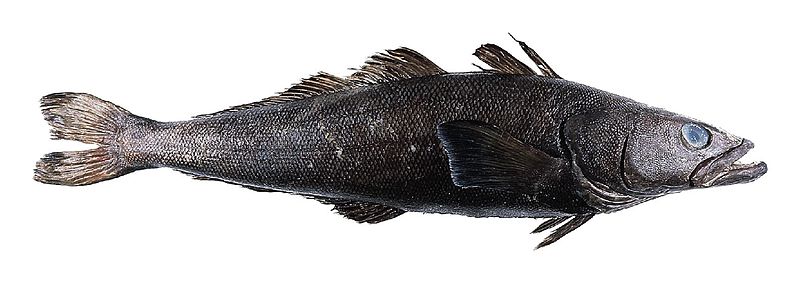The Chilean seabass is the commercially friendly name for the Patagonian toothfish, Dissostichus eleginoides. It’s a deep water icefish that is related to the Antarctic toothfish.

Identifying Characteristics
- The Patagonian toothfish can live up to 50 years and reach over 7 feet and 50 pounds. The most common size for commercially caught Chilean seabass is about 20 pounds.
- They are a slow growing fish feeding on plankton when young and moving to other fish, squid, and crustaceans as they mature.
- Since they are so slow growing and reproduce later in their lifespan they are vulnerable to overfishing.
- Patagonian toothfish spawn in deep water during the austral winter.
- They are not a particularly attractive fish in name or features (but the meat is quite tasty), so a fish purveyor renamed it hoping to entice people into buying it.
The story of the Chilean Seabass renaming via Wikipedia:
The name “Chilean Seabass” was invented by a fish wholesaler named Lee Lantz in 1977. He was looking for a name that would make it attractive to the American market. He considered “Pacific sea bass” and “South American sea bass” before settling on “Chilean sea bass”. In 1994, the U.S. Food and Drug Administration (FDA) accepted “Chilean Seabass” as an “alternative market name” for Patagonian toothfish, and in 2013 for Antarctic toothfish.
Range and Habitat
- Patagonian toothfish are found in the southern Atlantic, Pacific, and Indian oceans.
- They live between 150 and 12,000 feet depths, in very cold water.
Market Forms
- The Chilean seabass meat is high in fat content with a rich, buttery flavor. The meat cooks up with thick, firm flakes. Since the fat content is so high, the flesh handles a wide range of cooking methods.
- Since this meat can command a high price, it has a history of illegal fishing. This fish is on the Seafood Watch list, and is heavily regulated now. According to the US Dept of Commerce, a 24-country commission is responsible for conserving the fish within Antarctic waters with catch limits and other management measures. The individual governments and countries that fish for this fish regulate Chilean seabass in their own waters.
Image courtesy US FDA via Wikimedia Commons, under a public domain license.
